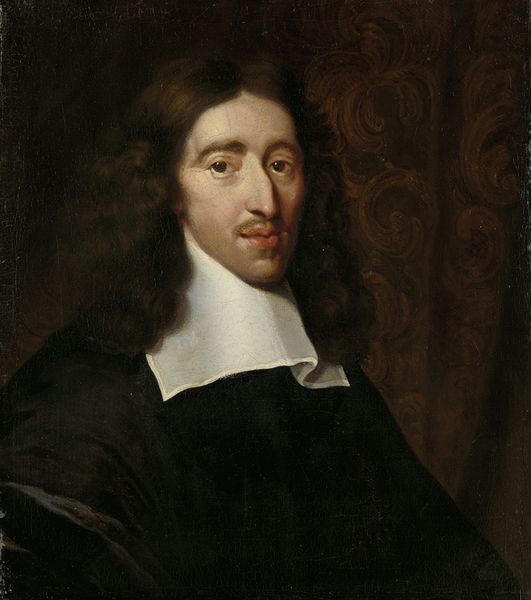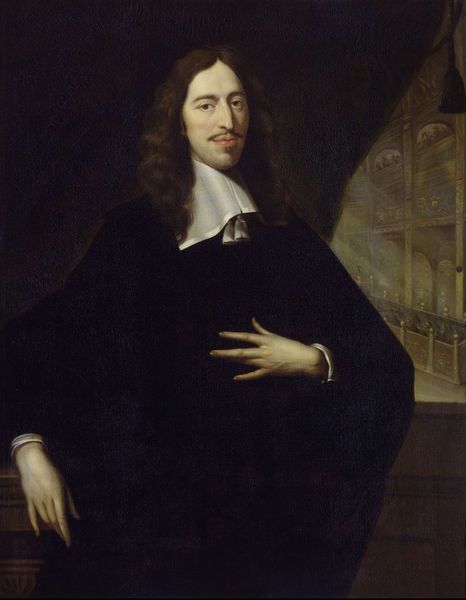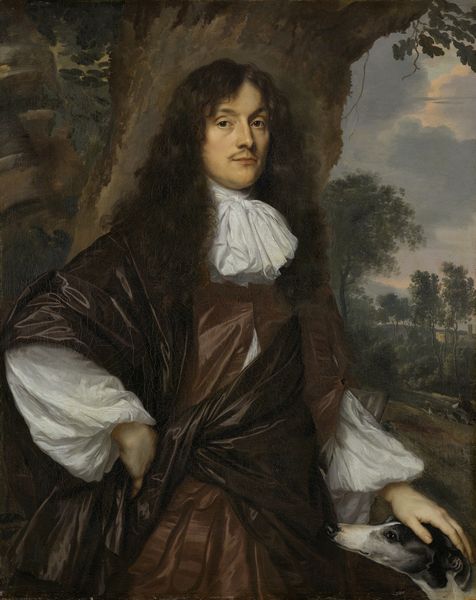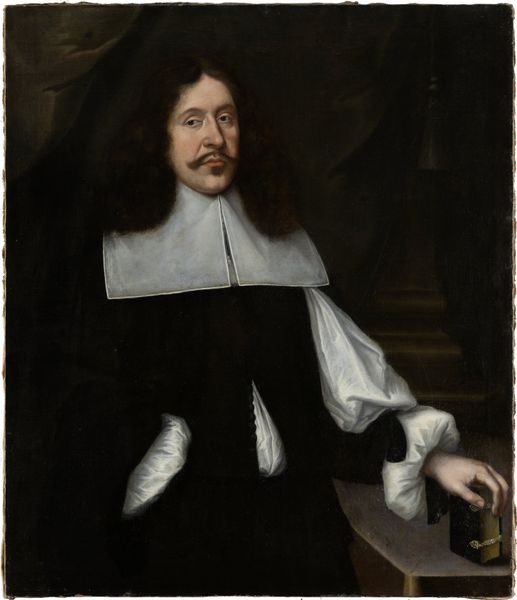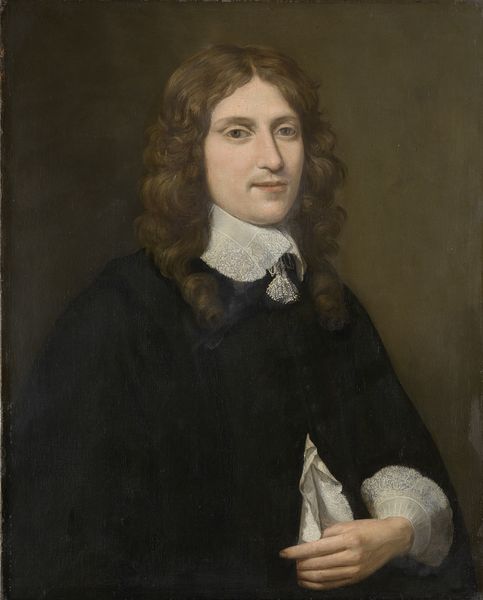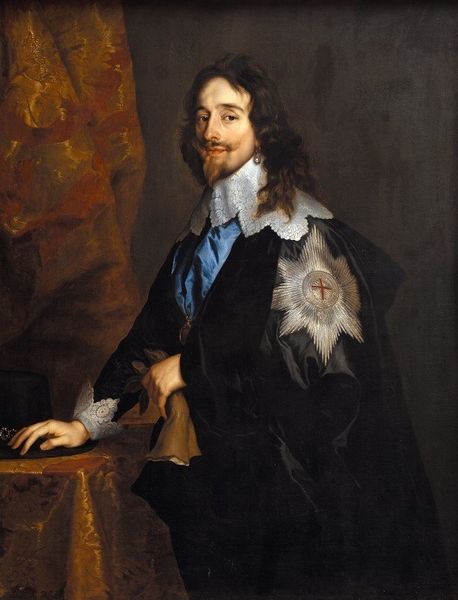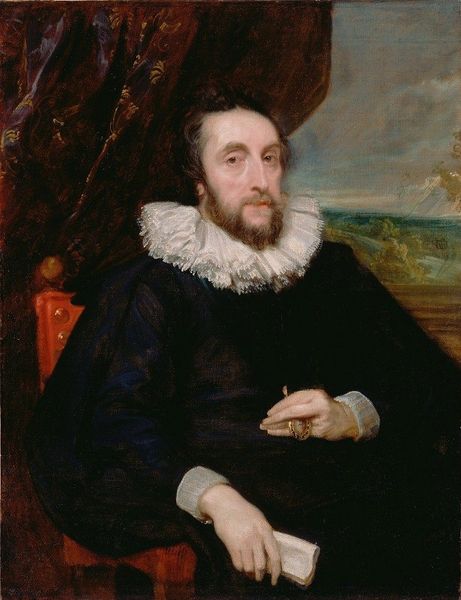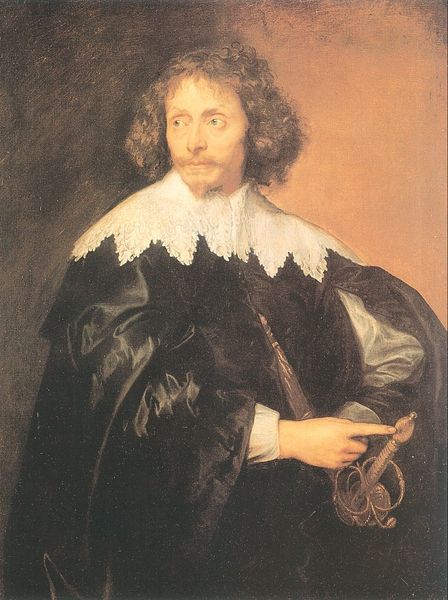
painting, oil-paint
#
portrait
#
baroque
#
portrait
#
painting
#
oil-paint
#
realism
Copyright: Public domain
Curator: Look at this arresting portrait! Painted in 1646 by William Dobson, this is Nicholas Oudart, a figure of some import in his day. The piece is oil on canvas, exhibiting that poised realism so admired in the era. Editor: Immediately I’m struck by the contrast, that almost luminous face set against such dark clothing. He has kind eyes, don't you think? Almost vulnerable. But is that defiance in the set of his mouth? Or am I projecting again? Curator: I wouldn’t say projecting exactly. There's certainly a tension there. Oudart was, among other things, a translator, and Secretary to the rather tragic Charles the First during a very turbulent time. That context cannot be unseen, I think. The painting reflects the gravitas of the period. Editor: It makes one wonder what that intense gaze has witnessed. And he’s holding a very imposing book. It’s clearly significant. Almost as if it’s part of his armour. Do you think this object signals something beyond mere wealth or status? Curator: Oh, absolutely. The book’s size and ornate cover suggest it's not just a prop. More likely a symbol of knowledge, authority, perhaps even his personal beliefs. And don't overlook that stormy landscape glimpsed in the background; a pictorial nod to the political storms brewing. Dobson was rather adept at such subtle visual cues. The English Civil War looms over everything in that period, like that tree about to get struck by lightning in the distance. Editor: Yes! The ominous skies. And Oudart is presented as a beacon of learning, perhaps holding back the tides of some sort of... intellectual or even literal darkness. Very powerful stuff. I wonder, though, if Dobson perhaps softened Oudart’s features somewhat? Giving him that... 'kind eyes' look as I see it, versus what must have been the grit it took to navigate such treacherous times. Curator: That's an interesting point. Dobson certainly was no stranger to royal portraiture and the game of soft power it represented. Perhaps Oudart himself wanted to project a particular image during a period where every public face had a message to convey. It gives an element of ambiguity to his stance. Editor: Ambiguity suits it well, in a strange way. Thank you for your perspective. This painting truly reveals so much about the individual, about the era. It’s more than a portrait; it is a historical artefact, with layers we could spend all day peeling away. Curator: Indeed. It gives us not just an image of Oudart, but a window into a world on the brink of transformation. A world Dobson captured with startling subtlety.
Comments
No comments
Be the first to comment and join the conversation on the ultimate creative platform.
